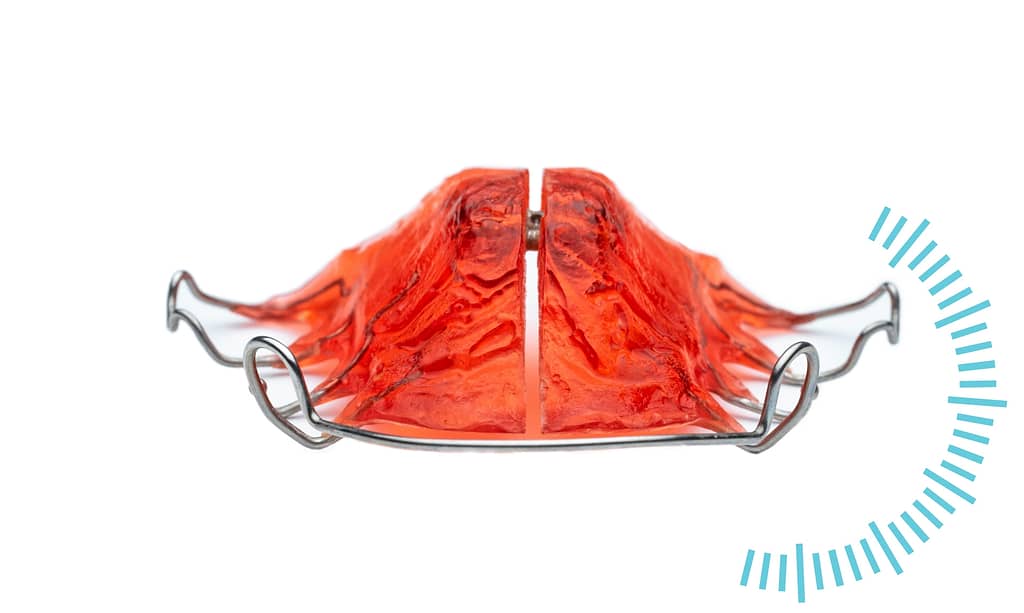How Do Palatal Expanders Work and Who Needs Them? We Have Answers

So, your child just had their first orthodontic evaluation. And, your dentist informed you that your child needs a type of orthodontic appliance referred to as a palatal expander. If you never had an expander as a child, you’re probably curious about this. Not only that, but you surely have a lot of questions. What is the procedure like? Will it be painful for my child? What do you mean I need to turn a key every day? But don’t worry, these questions aren’t unique. Most parents ask these very same questions. In this article, we’ll lay it all out for you so that you know what to expect from palatal expander treatment for your child.
What is a palatal expander?
A palatal expander is an oral device used by dentists and orthodontists to widen the maxilla (upper jaw). It fits over several top teeth at the back of the mouth and gradually pushes the maxilla (palate) apart. This widening helps make room for crowded teeth and corrects the alignment of the upper and lower jaws.
The expander applies gentle pressure on the bones of the palate, encouraging them to stretch and grow wider. This is possible because the bones in a child’s upper jaw don’t fully fuse until later in adolescence, making early intervention effective. Using an expander is a common step in ensuring that teeth have enough space to align properly as they grow.
Who needs palatal expanders?
While palatal expanders can be used for adults, they are far more effective when used on children. The difference is that an adult jaw is completely extended, plus the adult teeth have likely all grown in. This can make adult treatment take longer than it does for kids.
That said, here are some signs that your child may need a palatal expander.
- Crowded or crooked teeth: A palatal expander can create the needed space if your child’s mouth is too small to accommodate all their teeth, leading to crowding or overlapping.
- Crossbite: This occurs when the lower jaw is wider than the upper jaw. The result is that the upper teeth may bite inside the lower teeth instead of on the outside. An expander can correct this alignment by widening the upper jaw.
- Impacted teeth: Sometimes, teeth (often the canines) do not emerge because there is not enough space in the jaw. Expanding the palate can help these teeth find a path to erupt properly.
- Breathing issues: A narrow upper jaw can restrict nasal passages, leading to breathing difficulties. Expanding the palate can improve airflow through the nasal passages.
The palatal expander treatment process.
While we all want treatments to be completed as quickly as possible, especially for kids, the fact is that palatal expander treatment takes some time. In most cases, treatment will take about three to six months. But, in the cases of severe overcrowding or impacted teeth, treatment may take about one year.
Here is what your child can expect from palatal expander treatment.
- Placement and fit: The palatal expander is custom-made to fit your child’s mouth, and bands are used to attach it to the upper molars. It sits across the roof of the mouth (palate).
- Daily adjustments: As a parent, you’ll play a direct role in the treatment. You will use a special key to turn a screw in the center of the expander. Each turn slightly widens the expander, applying gentle pressure to widen the upper jaw. Your child’s dentist or orthodontist will instruct you on how often to turn the key.
- Feeling pressure: After each adjustment, your child may feel pressure in the mouth and across the nose. This sensation is typically brief, lasting only a few minutes.
- Speech and eating: Initially, your child might find it challenging to speak and eat with the expander. These difficulties usually improve as your child gets used to the device.
- Follow-up visits: Regular appointments with the dentist or orthodontist are necessary to monitor progress and adjust the expander.
- Post treatment: Once the desired expansion is achieved, the expander might be left in place for several months to stabilize it and prevent regression.
Orthodontic expanders for children can lead to a straighter smile.
If your child has a crooked smile and is experiencing crowding, then palatal expanders are a great solution. Orthodontics for children, especially when starting with an early orthodontic evaluation, can reduce the need for or shorten the treatment of future orthodontic solutions. And because your child’s mouth is still growing and expanding, treatment, when they are young, is often the best course of action.
At Compass Dental Group, it is our goal to help your child get on the path to a beautiful, healthy smile. And if that means an orthodontic expander, we’re here to help them every step of the way. If your child has a crooked smile, now is the time to request an appointment and explore your options. We can’t wait to hear from you.